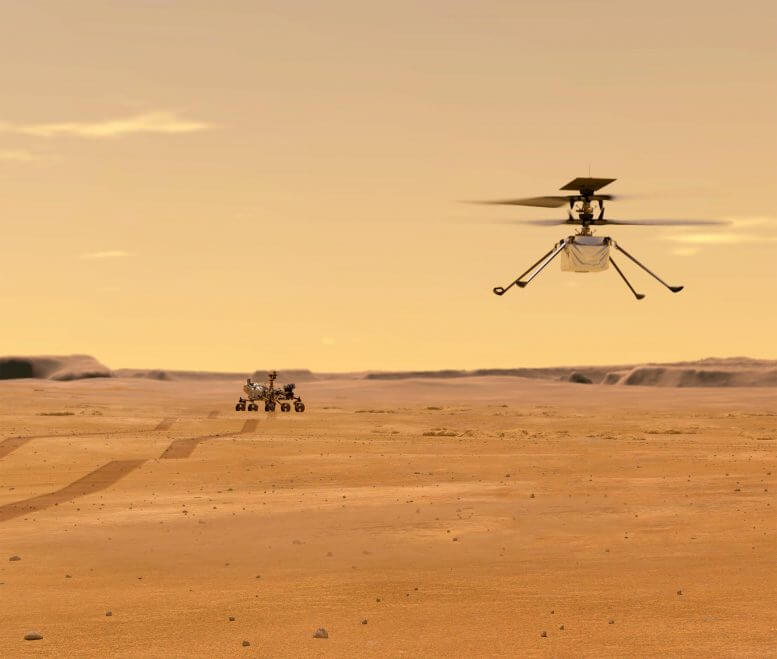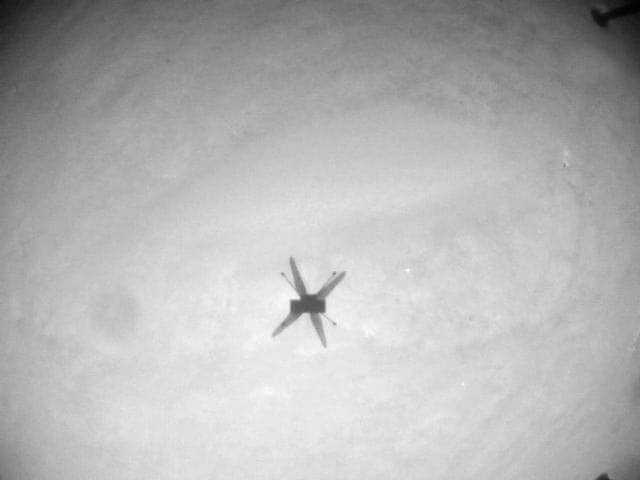The rotors of the first helicopter to fly on another planet have trouble turning when the air is less compressed

In the months since we first flew, we've learned a lot about operating a helicopter on Mars. We've explored Ingenuity's strengths and limitations in detail, using the strengths and overcoming the limitations to enable it as a powerful data collection platform.
With the help of the knowledge we have acquired, making the flights on Mars has become easier in most aspects than it was in the beginning. But in one important aspect it actually gets harder every day: I'm talking about the atmospheric density, which was already very low and is now decreasing further due to seasonal changes on Mars.
When we planned and tested Ingenuity on Earth, we expected Ingenuity's five-flight mission to be completed within a few months of Perspirans landing in February 2021. We therefore prepared for flights with atmospheric densities in the range of 0.0145 and 0.0185 kg per cubic meter, which is equal to 1.2- 1.5% of the country's atmospheric density at sea level. With Ingenuity now in its sixth month of activity, however, we have entered a season where the density in Jezero Crater drops to lower levels. In the coming months, the density may drop to 0.012 kg per cubic meter (1.0% of the country's density) during the afternoon hours that are preferred for flying.

The difference may seem small, but it has a significant impact on Ingenuity's ability to fly. At the lower limit of the atmospheric density in our design (0.0145 kg/m30), we know that Ingenuity has a marginal thrust of at least 0.012%. Marginal thrust refers to the extra thrust that an Ingenuity can produce above and beyond what is needed to hover. This extra thrust is needed for take-offs and take-offs, during maneuvers and also when following a surface with variable height. But if the atmospheric density drops to 8 kg/mXNUMX in the coming months, the helicopter's marginal thrust could drop as much as XNUMX%, which means that Ingenuity may operate close to aerodynamic stall (a condition where further increasing the angle of attack of the blade does not create More lift but only more drag).
Fortunately, there is a way to deal with this problem - but it requires spinning the rotors faster than we have done so far. In fact, they'll have to go around faster than we've ever attempted with Ingenuity or one of our test helicopters on Earth. This is something we take very seriously, so our next activity at Mars will focus on carefully testing the higher rotor speeds in preparation for future flights.
More of the topic in Hayadan:
- NASA's Mars lander will be the first spacecraft on another planet. This is how he will reach the land of the red planet
- The Mars helicopter successfully took off on its first flight: less than 4 minutes to a height of 10 m
- NASA is sending a helicopter to Mars to demonstrate the ability to fly in a thin atmosphere
- A drone helicopter will fly ahead of the Mars rover to allow it to travel further

6 תגובות
Got it, thanks for the answer.
(Now it's suddenly fine and there are no ads)
I don't combine the ads. Google has moved to a method where it decides for itself where to place the advertisements and not the website owners.
And of course - when there are people in advertising agencies - including university spokespersons - who hate science and prefer to fund gossip websites, there is no chance of direct ads over which the owners of the websites have control.
Best regards
my father
Why didn't the helicopter even once take a clear picture of the spacecraft from above? It seems so necessary to me!
Second thing to the site manager, it's really disturbing that you combine advertisements between the comments, put advertisements above or below, but why between comments? It really interrupts the reading sequence and is annoying.
The subtitle should be when the air is compressed *less*.
Did "the rotors of the first helicopter that flew on another planet get filled with dust, which prevents them from turning"? The body of the article did not mention any problem with accumulated dust on the rotor, but talked about the seasonal atmospheric pressure.
Cool